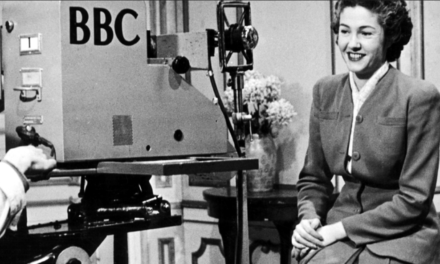Ever since the publication of American sociologist Louis Wirth’s 1945 article “The Problem with Minority Groups,” the term “minority” has referred to groups of individuals who receive unequal treatment and are subjected to discrimination because of physical or cultural characteristics[1].
The definition of “minority” has, particularly since the advent of intersectional scholarship[2], evolved to take into consideration the variety of ways in which components of a marginalized subject’s identity intersect and complexify their experiences of oppression. The term now theoretically applies to any person who is socially disadvantaged because they do not fit in a symbolic norm in terms of gender, race, class, sexuality, and religion. Hegemonic norms also pervade linguistic identities and affect verbal and non-verbal manifestations and perception of Otherness. In this regard, the francophone distinction[3] between langage (language as a concept) and langue (the language one speaks) sheds light on various conceptions of identities, whether essentialist or constructivist. Indeed, langage is a natural capacity while langue is a socially-constructed communication tool that is learned and updated. Matters pertaining to linguistic identities are therefore key to politics of representation.
In audiovisual productions, the otherness of minority groups tends to be expressed by the presence of characters coded along demeaning stereotypes or by their invisibilization in both representation and production. With the rise of what has been called “4th wave feminism” in the 2010s[4] and the popularization of an often-simplified intersectional framework that came to prominence in the 1990s, major production companies sought profits in the commodification of characters, actors or directors who openly and unashamedly identified with one or several minorities. Academics who work in film and cultural studies have particularly questioned the subject of minorities in audiovisual productions and industries either by centering their works on a specific minority or by regarding their objects of study through an intersectional lens that combines several components of identity politics, the most popular of which being gender, race, class, and sexuality. Studies that incorporate linguistic identities, however, tend to remain marginal, with language often included solely within a list of differences that would not be addressed.
Thus, this conference intends to rely on the deconstruction of the meaning of “language” through the francophone concepts of langue and langages so as to further question the complexities of minority languages in English-speaking cinema and television.
Presence and treatment of foreign languages, regional dialects, and accented English.
Representations of minority languages can rely on the presence and treatment of characters or communities that speak foreign languages, regional dialects, or accented English and are, therefore, defined by their use of minorities’ languages or non-standard varieties of English. This is the case, for instance, of representations of Polish accents in classical cinema or of Irish accents in John Ford’s works. When they do take the characters’ origins into account, some representations rely on common stereotypes while others allude to more nuanced representations of marginalized characters’ experience of oppression. Attention could also be paid to other audiovisual works that, on the contrary, disregard the question of origins altogether despite their characters speaking accented English.
In her explanation of the concept of demarginalization, Kimberlé Crenshaw resorts to the metaphor of a basement in which “all people who are disadvantaged” are “stacked – feet standing on shoulders.”[5] On top of the pile, “all those disadvantaged by a singular factor brush up against the ceiling [which] is actually the floor above which only those who are not disadvantaged in any way reside. In efforts to correct some aspects of domination, those above the ceiling admit from the basement only those who can say that ‘but for’ the ceiling, they too would be in the upper room.”[6] Representations of linguistic minorities question the aspects of identity fictional norms could accept to demarginalize. In that vein, some representations dramatize the experience of linguistic passing endured by marginalized characters who wish to be included in the symbolic norm. In that case, could the stereotypes of the “redneck” and of the “poor white trash,” often characterized by strongly accented speech and regional and class dialects, be considered as minority stereotypes? How about the characters who preserve their accents and dialects although they evolve in more privileged economic situations? The meaning of the treatment of linguistic minorities is to be understood in specific representational contexts, the contours of which participants are invited to delineate.
Because actors rarely match the minority languages they portray, this theme is also relevant to the field of reception studies. Given strong popular reactions faced by casting choices (particularly since the advent of social media), it could be interesting to interrogate the input of an actor or actress’ public persona in the crafting of a marginalized character as well as the reception of actors and actresses who do not belong in the same linguistic minority as their characters. And while popular reactions tend to revolve around representations of foreign languages, participants are invited to question the transferability of such matters to regional accents and dialects. In addition, whether characters speak in a foreign mother tongue or in accented English, the decision to (not) include subtitles could also be interrogated. What is to be made of films and series, such as The Good Place (NBC, 2016–2020), that create storyworlds in which languages cannot hinder communication anymore thanks to translation gimmicks that have no equivalent in the real world?
Representing (re)appropriations of linguistic means of oppression.
Minority languages also function as sites of oppression and resistance. Hence, their representations can reproduce and cement the function of linguistic identities in the social matrix, but they can also resist the norms of hegemonic languages, accents, and vocabularies. Although British social classes are often marked by accent in kitchen sink dramas such as Saturday Night, Sunday Morning (Reisz, 1960), other movies and series resist the pervasiveness of hegemonic accents by way of parody, in the vein of Monty Python’s Flying Circus (BBC1, 1969–1974). Cinema and television can open up new ranges of representational possibilities and give voices to linguistically-marginalized characters. The representations of Korean in Minari (Chung, 2020), of Māori in Whale Rider (Ihimaera, 2003), or of Aboriginal languages in Charlie’s Country (De Heer, 2013) among others, interrogate how far movies and series can dismantle preexisting linguistic stereotypes. The reappropriation of former words of oppression as means of subjectification also partakes in the dramatization of minorities’ power struggles. In that sense, what is to be made of characters that reappropriate racist, sexist, homophobic or transphobic expressions? If the codes of hegemonic language shape the representations of a norm of restraint and politeness, could representations of linguistic minorities actually reinforce other stereotypes attached to specific groups? In Glory (Zwick, 1988), for instance, Private Silas Trip (Denzel Washington) repeatedly uses the “N-word” and is reprimanded by his superior, Sergeant Major John Rawlins (Morgan Freeman), who explains what verbal (him cursing a lot) and non-verbal (his angry posture) means of communication could influence the way he is perceived. Thus, could representations of linguistic reappropriations, in effect, reify the majority by further stereotyping minorities? On the contrary, could they be said to contribute to the emergence of new norms? Word choices might also be accompanied by specifically-coded body language, as in Glee (Fox, 2009–2015) in which teenager Kurt’s (Chris Colfer) homosexuality is exacerbated by the actor’s posture and gestures. In this regard, how do spoken and body languages contribute to the formation and dismantling of stereotypes?
Minority groups’ impetus to push the boundaries of cinematic language.
These considerations also interrogate the cinematic languages ascribed to characters that belong to linguistic minorities. The inclusion of characters that embody cultural stereotypes associated to foreign or regional languages and varieties can generate aesthetic encounters and generic hybridity, in the vein of those noticeable in Everything Everywhere All at Once (Kwan & Scheinert, 2022). Given marginalized directors’ personal positioning outside of the norm, to what extent could their works be said to resist traditional serial and cinematic codes? Could some of them be said to resort to cinematic passing? And if, to Christina N. Baker, black women filmmakers’ creative works function as “instrument[s] of ideological change and resistance,”[7] how far could a similar remark apply to the works of filmmakers who identify with other minorities? Could their works allude to the emergence of multiple cinematic languages that might resist the norms of hegemonic cinema? If so, what could be said about the evolution of the cinematic languages of marginalized filmmakers who became involved in mainstream projects? If cinematic minority is understood in opposition to mainstream cinema, how do minority cinemas contribute to the emergence of multiple cinematic langues and langages that resist the codes of hegemonic cinema? Would it not be more fitting, as film scholar Christian Metz wondered[8], to refer to cinematic languages as cinematic langues instead?
This study can apply to films and series from all English-speaking media regardless of format or time period. Contributions can also focus on the following topics directly linked to the subject:
- The different means of representing various linguistic minorities’ experiences
- The representation of Otherness through language
- The subtitling and translation of minority voices
- The commodification of minority languages and linguistic identities
- Audiovisual adaptations of minority authors’ works
- Audiovisual adaptations by minority filmmakers
- Cinematic languages and the development of new means of representation
- The place of linguistic identities in film studies and in film theory
- Film and series generic influences and possible hybridization in the works of minority filmmakers and series producers
- The politics of representation of minority languages
- The reception of minority languages
- The meaning of langue and langage in film studies
The conference will take place on October 12th and 13th, 2023 on the Pont de Bois campus in Lille, France. Please submit a 300–500 word abstract and short bio in English or in French by June 19th, 2023 to the following address: mikael.toulza@univ-lille.fr
Notes:
[1] Wirth, Louis. “The Problem of Minority Groups”. In The Science of Man in the Word Crisis, Ralph Linton Ed., New York: Columbia University Press, 1945. 2
Collins, Patricia Hill. Black Feminist Thought: Knowledge, Consciousness, and the Politics of Empowerment [1990], 2nd Ed., New York: Routledge, 2000.
[2] Crenshaw, Kimberlé. “Demarginalizing the Intersection of Race and Sex: A Black Feminist Critique of Antidiscrimination Doctrine, Feminist Theory, and Antiracist Politics”, University of Chicago Legal Forum, 1989: S. 139–167.
[3] Saussure, Ferdinand de. Cours de linguistique générale [1916], Charles Bailly and Albert Séchehaye Eds, Paris: Payot et Rivage, 1995: S. 25.
[4] Munro, Ealasaid. “Feminism: A Fourth-Wave”, Political Insight, vol.4, no.2, 2013: S. 22–25.
[5] Crenshaw, Kimberlé. “Demarginalizing the Intersection of Race and Sex: A Black Feminist Critique of Antidiscrimination Doctrine, Feminist Theory, and Antiracist Politics”, University of Chicago Legal Forum, 1989: S. 151.
[6] Ibid.
[7] Baker, Christina N. Contemporary Black Women Filmmakers and the Art of Resistance, Columbus: Ohio State University Press, 2018: 19.
[8] Metz, Christian. “Le cinéma : langue ou langage ?” In Communications, 4, 1964: 52–90. https:////cstonline.net/





